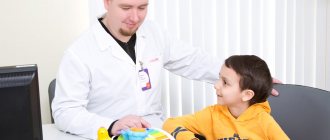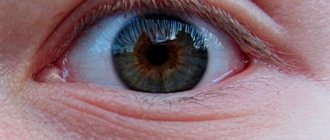Every society has certain standards of mental health, law, culture and morality. Social norms often suppress the instincts and desires of the individual. But if you want others to understand and accept you, you need to somehow meet these standards. For example, when you see a beautiful flower bed in bloom and follow social norms, you inhale the aroma and admire the flowers instead of picking them and taking them with you. Naturally, when raising your child, you try to accustom him to the same way of acting. And yet, even among respectable parents, the behavior of children sometimes goes beyond the norms prescribed by society. Psychologists call this behavior deviant, asocial, inadequate, and so on. What is the phenomenon of children with behavioral problems and how to deal with it?
Deviant behavior
In fact, children with behavioral problems are not that uncommon. Some deviations not only cause the indignation of parents and teachers, but also carry the seeds of future misconduct, posing a threat to the child himself, his environment and even society as a whole. Studying children with behavioral disorders, psychologists divide their actions into social deviations of self-interested, aggressive and social-passive orientation. Social deviations of selfish orientation include theft, fraud, speculation and other offenses, the purpose of which is to gain profit. Deviations of aggressive orientation are directed against the individual - these are insults, hooliganism, beatings, etc. Socially passive deviations are associated with a reluctance to solve personal and social problems, these include avoidance of school and work, vagrancy, drug addiction and suicide. Behind every external manifestation in children with behavioral problems there can be deep personal problems. And since there is no universal answer to all situations of deviant behavior, in order to help a child, you need to understand the reasons for each specific situation.
Your psychologist. The work of a psychologist at school.
Schoolchildren with deviant behavior: features of education.The number of schoolchildren who are identified as students with deviant behavior, unfortunately, is increasing every year. Because the number of provoking factors contributing to the formation of deviant behavior is increasing. The concept of “deviant” comes from the Latin deviatio – deviation. Deviant, deviant behavior is a system of actions or individual actions that contradict the legal or moral norms accepted in society.
Deviant behavior is complex in nature and is caused by a variety of interacting factors. Among them, the most important are: Biological factors are unfavorable physiological or anatomical features of the child’s body (mental development disorders, hearing and vision defects, damage to the nervous system, bodily defects, speech defects, etc.) Psychological factors are psychopathologies or character accentuations . These deviations are expressed in neuropsychic diseases, psychopathy, neurasthenia, borderline states, which increase the excitability of the nervous system and cause inadequate reactions of the teenager. Social and psychological factors are expressed in defects in family, school and public education; they are based on ignoring the gender, age and individual characteristics of children, leading to disruption of the socialization process. The most important reasons for deviations in the psychosocial development of a child can be dysfunctional families, certain styles of family relationships that lead to the formation of deviant behavior in students, namely: * a disharmonious style of educational and intrafamily relationships, when a unified approach and general requirements for the child have not been developed; *conflict style of educational influences, often dominant in single-parent families, in situations of divorce, long-term separation of children and parents; *asocial style of relationships in a disorganized family. It is characterized by systematic use of alcohol, drugs, and the manifestation of unmotivated cruelty and violence. An analysis of the family and its impact on the psychosocial development of the child shows that in a large group of children the conditions of their early socialization are violated. In this regard, it is impossible to separate the child’s problems and work with him without studying the family, parenting style, and the characteristics of the relationship between parents and children. Socio-economic factors include social inequality, stratification of society, impoverishment of a large part of the population, unemployment and, as a consequence, social tension. Moral and ethical factors are manifested in a decrease in the moral and ethical level of society, the absence of a specific value system that would influence the development and socialization of the individual. Thus, deviant behavior appears as a normal reaction to the abnormal conditions for a child in which he finds himself, and at the same time as a language of communication with society when other socially acceptable methods of communication have exhausted themselves or are unavailable. In modern pedagogy, there are 3 technologies: social and pedagogical prevention, psychological and pedagogical support and social and psychological rehabilitation. The technology of socio-pedagogical prevention is aimed at preventing, eliminating or neutralizing the main causes or conditions that cause various kinds of social deviations in the behavior of adolescents. This technology falls into the category of group, mass work. Within the educational institution, it is implemented in the system of educational work. The technology of psychological and pedagogical support is individual and is carried out at the request of the class teacher, administration and parents. It includes the collection of information, the initial formulation of the problem, psychological and pedagogical diagnostics, and the development of recommendations for the child, parents, class teacher, and subject teachers. The technology of socio-psychological rehabilitation is not used within general educational institutions. When working with children with deviant behavior, you can use the following recommendations.
When interacting with an aggressive child
- accept the child as he is;
- When making your demands on a child, take into account not your desires, but his capabilities;
- broaden your child’s horizons;
- include the child in joint activities, emphasizing his importance in the task at hand;
- Ignore mild manifestations of aggressiveness, do not focus the attention of others on them.
- You need to fight aggression with patience. This is the greatest virtue that parents and teachers can have. Explanation . Tell your child what interesting things he can do. Encouragement. If you praise your student for good behavior, this will awaken in him the desire to hear this praise again.
If the child experiences fears.
- accept the child as he is, giving him the opportunity to change;
- develop positive emotions in your child, give him your time and attention more often;
- treat the child’s experiences and fears with understanding, do not ridicule them and do not try to eradicate this fear with decisive measures;
- Play out the situation that causes anxiety with your child in advance.
If your child is lying, follow these rules:
- praise, approve of the child more often, encourage him for good deeds;
- if you are sure that the child is lying, try to force him to be frank and find out the reason for the lie;
- Having found a possible reason for the lie, try to delicately eliminate it so as to resolve this problem;
- do not punish a child if he himself admits to lying and evaluates his own actions.
THEORIES OF AGGRESSIVENESS. The 20th century is the most aggressive century. The presence of certain hormones affects the appearance of aggressiveness. Theories of aggression.
- Aggression is an innate character trait.
- Aggression is a product of education and socialization.
- Freud's psychoanalytic theory.
A person has two basic instincts: “donatas” - the instinct of the desire for death, “natas” - the instinct of the desire for life (sex). Aggression is an innate human trait, so there will always be wars. This theory does not explain why aggression manifests itself in different ways.
- Frustration theory of aggression.
Aggression manifests itself in certain situations when our needs are not satisfied. Didn't fully explain why people behave differently.
- Social learning theory.
The manifestation of aggression is associated with the environment and society. Stages of formation of aggressive behavior.
- The assignment by an individual (child) of a system of norms, patterns and rules of behavior in the process of interaction with the immediate microenvironment (family).
- Formation of stereotypes of aggressive behavior approved by the family and reference group.
- Experience of unpunished violent behavior.
- Increased conflict, hostility towards other people with a low level of self-control. Formation of personality traits.
Signs of aggressive behavior.
- Causing physical or moral harm to another individual or material object.
- Violation of social norms of society.
Aggression is a personal position, a personality trait, which consists of destructive tendencies, a willingness and preference to use violent means to achieve one’s goals. Types of aggressive behavior.
- Impulsive aggression is a direct reaction to a situation.
- Instrumental aggression is a means of achieving various goals that are significant for the subject.
- Hostile aggression is violence in which the destructive tendencies of a person’s personality are manifested.
- The motive of group solidarity, cohesion.
Types of aggressive reaction (Bassa, Darki).
- Physical aggression, attack.
- Indirect aggression (outbursts of rage, screaming, stomping, malicious jokes).
- Tendency to irritation, increased excitability, tendency to express negative feelings.
- Negativism. Oppositional behavior from passive behavior to open struggle.
- Resentment, envy and hatred towards other people.
- Suspicion from mistrust to the belief that people around are causing harm.
- Verbal aggression (screaming, quarrels, curses, swearing, threats).
Differences in aggressiveness between boys and girls. The congenital predisposition is the same. In the process of upbringing, boys become more aggressive than girls, since there is a gender role stereotype in society.
Childhood aggression___________________ From birth to one year. Some mothers say: “He was aggressive from birth.” If the child is healthy, then the reason for his behavior is in the mother. There is a close psychological connection with the mother, the child reacts to irritation and anger. The child is not comfortable, he feels bad with his mother. Method of expression – screaming, body movement, biting. Why does it bite?
- Teeth itch.
- Milk flow is poor (angry because food is of primary importance).
- Uncomfortable to hold.
What to do? Feed in a calm state. Move away, look into the eyes, clearly and calmly say “no”, continue feeding. Eliminate the cause of the bite. You cannot: scold, shame, threaten. Lots of emotions + negative reaction = fear. Feeding is very important for the baby's emotional development, so it should be enjoyable. The bite may be an attempt to establish contact with the mother. Whether this method of communication will be maintained or not will depend on her reaction. At 7 months new - throwing toys, pulling hair, screaming. Expresses aggression when an adult interferes with achieving a goal. Mom's reaction: incorrect if mom is angry. The child screams even more. If a mother punishes, the child first gets scared and becomes quiet, then gets used to it and does not react. Dead end path. Better:
- Explain why it is “impossible.”
- Distract.
- Talk calmly.
- Let your child satisfy his curiosity.
- Support.
- Show patience and friendliness.
One year. Child explorer. The task of parents is to help them learn the rules of behavior. Learn to control your anger. Introduce restrictions in a reasonable amount. You can't hit hands! One to two years. Learn to communicate. Communication with mom is important. If parents are emotionally cold, the child seeks attention from other people, often through aggression. Preschooler. Aggressive behavior can result from:
- Discrepancies between the temperaments of mother and child.
- When an older child is jealous of a younger one.
- When a child is bullied by one of the family members.
- When encouraging aggressive behavior in boys.
A child needs a loving and caring mother. What forms aggression is not the slap on the butt given in the hearts of the mother, but her aloofness and coldness towards him. School and aggression. Schoolchild from 7 to 11 years old. The period of adaptation to school is difficult. Not everyone accepts rapid changes, hence the resistance, the desire for things to be the same as before and, as a result, aggressive reactions: rudeness, refusal to comply with demands, nervous reaction to comments (they freak out, get angry, throw objects around, damage accessories). The initial period is dangerous for the development and consolidation of aggressiveness. Most often, those children behave aggressively whose claims to a role in the team are higher than they actually are (reasons: low academic performance, physical and behavioral characteristics, gait, habits, baking, inability to communicate). The importance of the period of 7-8 years in the formation of a child’s aggressiveness is confirmed by research. A relationship has been established between aggressiveness at 8 years of age and criminal aggressive acts committed at 30 years of age. Independence and aggressiveness.
- They try to adapt to the world, outside the family, they want to imitate children of their age and gender.
- They want to become more independent, independent from their parents.
- Children are ready to spend a lot of time and effort exploring the world around them.
This period is acute in boys. Often, in order to get out of the care of adults, they show rudeness. What contributes to the development of aggressiveness?
- School load.
- Teacher.
- Other children.
- Family.
School load. Aggressive behavior is a safety mechanism. Excess stress finds a way out from the outside without destroying the child’s personality. Teacher. Questions are an aggressive action. The teacher is forced to be aggressive. If the teacher’s rudeness is added as a verbal form of aggression, then the teacher is an example for the child. Children. In elementary school, children are quite cruel to each other. If the teacher or class leader does not accept someone, then the child becomes an object of ridicule and therefore begins to show aggression. If adults do not intervene, the behavior becomes permanent. Family. If a child does not have emotional contact with his mother, lacks love and care, then the child tries various ways to compensate for this. Such parents often do not react to good deeds, taking them for granted. But to aggressive, anti-social actions of a child that violate their own state or affect the opinions of others about them, they react quickly and emotionally. Even if these are negative emotions (anger, resentment, irritation), but still these are emotions that the child so lacks. By doing this, parents themselves reinforce the child’s negative behavior. In such families there is no model for nurturing empathy and experience, love. Sometimes aggressive behavior is demonstrated by parents. Teenager from 12 to 16 years old. The forms of manifestation are the same. Causes:
- The desire for personal freedom. Does not work. Anger at everyone.
- They want to convince the whole world that they are men. There are no real opportunities to demonstrate maturity. Some people start playing sports, others take care of their bodies, and others defiantly violate parental requirements.
- Teenagers with low self-esteem are more likely to be aggressive.
The teenager fights not against adults, but against his dependence on them. You need to learn to negotiate. Aggression and sexuality. Hormonal changes cause puberty and the emergence of sexual desire. They accept awakened sexuality on a subconscious level, but cannot comprehend it. Changes in the body and feelings cause discomfort, which can lead to unreasonable rudeness, increased impulsiveness, and aggressiveness. Statistics. Teenagers aged 13-15 believe that anger is a bad feeling (85%), only bad people feel strong anger towards someone (78%), when people get angry, they become worse (74%). According to personal growth researchers, accepting and constructively using one’s own anger is not only a privilege of a mature person, but also an indicator of personal maturity. The ban on expressing anger is transmitted by the older generation (parents, teachers). The inability to show negative emotions leads to the predominance of dependent behavior, especially in a situation when it is necessary to protect one’s rights.
WORKING WITH PARENTS AND TEACHERS. The task of a psychologist is to introduce them to the characteristics of aggressive children and teach them how to interact. Psychological education and correction are carried out through the following forms of work:
- Lectures (at parent-teacher meetings, educational institutions, pedagogical councils).
- Trainings.
- Individual consultation on the problem.
- Seminars and debates.
- Round tables.
The following exercises can be used:
- Collective product (definition of aggression).
- Exercise “Portrait of an aggressive child.”
- Exercise “The world through the eyes of an aggressive child.”
- Learn ways to express anger.
- Exercises to develop empathy.
- Exercise “Letter from an aggressive child.”
- Relaxation exercises to relieve anger.
- Psychological theater.
STRATEGY FOR WORKING WITH AGGRESSIVE CHILDREN. Incompatible response strategy. A person cannot simultaneously experience two opposite, incompatible emotions. It is necessary to place emphasis on the manifestation of such emotions that are incompatible with aggressiveness:
- empathy;
- humor;
- light eroticism, stroking, cuddling.
It is necessary to encourage alternative forms of behavior, create an atmosphere that would evoke sympathy for the pain of others, and strive in complex, high-conflict situations to ease tension with the help of jokes and humor, preventing it from developing into hostile relationships with people. Work with children. Goals: 1. Learn to express anger in an acceptable form. 2. Teach behavior in various situations. 3. Develop empathy, a sense of trust in people.
- Reading and literature lessons.
- Fairytale therapy, parables.
- Dispute.
“Cool” = confident behavior + a lot of aggression. “Strong personality” = confident behavior + lots of support.
- Exercises from body-oriented therapy:
“Washing machine”, “Rain”.
- Training exercises:
“Confident, uncertain, rude behavior” “Weather forecast” “Two sheep” “Pebble in a shoe” “Kind animal” “Blow off some steam” “Pushers” “Danish boxing” “Tuh - tibi - spirit” “Satisfied, angry” “Burst in a circle" "Anger sheet" "Emotional dictionary" "Little ghost" "Magic balls" "Name-calling"
Inappropriate child behavior
The child’s inappropriate behavior is based on negative affective experiences associated with the dissatisfaction of needs that are important to him. When an assessment of one's abilities, based on the child's previous achievements, does not correspond to the current situation and one must admit one's inadequacy, some children experience affective experiences. Instead of overestimating their aspirations, children show an inadequate reaction to failure - increased sensitivity, stubbornness, isolation, emotional instability, inhibition, denial. For example, if in one school a child was successful in English and received praise from the teacher, then when he enters another school, where his achievements do not stand out from other students, he may begin to resent the teacher and believe that he is being treated unfairly. Inappropriate behavior of a child is a kind of defensive reaction designed to help in the event of a fiasco. In order not to lower self-esteem, the child begins to blame parents, teachers, immediate surroundings, circumstances, fate. Inappropriate behavior of a child causes responses from teachers and parents, which in turn intensifies affective experiences. The circle closes.
Prevention of deviant behavior in adolescents
Prevention of deviant behavior in adolescents largely comes down to early detection of signs of regular behavioral deviations - problems with learning, pathologies in family relationships. Here, attention and vigilance are of no small importance not only from parents and close relatives, but also from friends, school teachers, and even neighbors.
Young people are endowed with flexible adaptive mechanisms, therefore the complex rehabilitation and correctional measures carried out bring favorable results, due to which the treatment of behavioral disorders has good positive prognoses. The development of deviations due to neurological or psychotic diseases can be seriously treated. The best prevention of deviations is a healthy atmosphere in the family, a teenager’s feeling of being needed, help and support from loved ones.
Antisocial behavior of children
Speaking about antisocial behavior in children, psychologists note that it arises as a result of a violation of the interaction of the individual with the environment. Children with antisocial behavior are divided into four groups:
- First group. It includes children whose antisocial behavior is associated with deviations in the development of the emotional-volitional sphere and individual characteristics, up to psychopathy;
- Second group. These are children whose antisocial behavior is associated with incorrect forms of influence. For example, when adults impose strict disciplinary requirements on a child without taking into account his age, emotional state, or experiences. Children of this group do not need behavior correction; on the contrary, it is adults who must reconsider their attitude to their actions in the situation;
- Third group. It includes children with serious gaps in moral and ethical education. In other words, these are neglected children whose antisocial behavior is associated with the connivance of adults. Such children do not consciously violate social norms because they are simply not familiar with them;
- Fourth group. These are difficult-to-educate teenagers; the antisocial behavior of children in this group is associated with a distortion of moral ideas and personality traits. Such children understand that their behavior is contrary to social norms, but they do not want to change it and refuse any interference in their lives, reacting to critical feedback with indifference, defiant behavior and disagreeing with the negative assessment of others. This is the most difficult group to educate, since such children are confident that they are right.
Classification of types of deviant behavior
There are a sufficient number of classifications of deviant behavior. Here we will look at one used in medicine, which is based on ways to violate established social norms. Forms of deviant behavior of adolescents:
- delinquent. Manifests itself in theft, violence and robbery;
- addictive. Manifests itself in avoidance of reality and support of intense emotions. Adolescents manage to achieve changes in their mental state by taking chemicals - alcohol, drugs, toxic substances or by focusing on specific actions - masturbation, trance;
- pathocharacterological. Based on psychopathy of various forms: schizoid, hysterical and others;
- psychopathological. Based on symptoms of mental illness, such as depression;
- hyperabilities in the form of talents, gifts, and genius result in deviations from average behavioral norms.
Suicidal behavior in children
In the most tragic cases, deviations in the child’s behavior take an extreme form - suicide. Psychologists believe that suicidal behavior in children is associated with an ambivalent attitude towards death - the child perceives death as a way of manipulation, for example, imagining how the mother will be upset, but does not realize the irreversibility of the consequences.
Typically, suicidal behavior in children is aimed at attracting attention; it is preceded by depression, boredom, loneliness, isolation, and aggression towards the environment. Sometimes suicidal behavior takes a hidden form when a child chooses extreme sports, joins dangerous groups, or takes drugs.
The reasons for suicidal behavior in children include conflicts with parents, peers, immediate environment, and misunderstanding at school. At the same time, children most often refuse the help of adults.
Symptoms of deviant behavior in adolescents
A feature of deviant behavior in adolescents is the absence of clearly defined stages of the disease and its accompanying symptoms. The development of the disease goes through periods of isolated actions, moving on to regular actions and organized activities that make up a way of life. This process can take varying periods of time, from a couple of weeks to several years. The clinical manifestation of deviant behavior is based on the complexity of social adaptation. It is expressed in a frequent change of friends, regular conflicts with peers at school and teachers, as well as a craving for bad companies.
Difficulties in social adaptation are often characterized by leaving home, skipping classes, refusing to go to school, and becoming addicted to life on the Internet or computer games. In this case, the teenager is characterized as absent-minded, inattentive, fickle or flighty (regularly abandons unfinished tasks and constantly changes his hobbies). Educational activities do not arouse his interest, so his academic performance is low and learning is difficult.
In the emotional sphere, a teenager is characterized as infantile, which is expressed in a lack of responsibility and self-control, and inability to adapt to everyday life and the household. As a result, such traits as sloppiness, unpunctuality, and inability to plan and act according to plan appear. Emotionally, a teenager becomes unstable, he is subject to frequent mood swings, as a result of depression, obsessive fears, hysterics, aggression, stubbornness, isolation or emphasized indifference, cruelty.
In terms of physiology, there is a disturbance in appetite and sleep, decreased immunity, and other psychosomatic reactions. As a result, excess weight or signs of anorexia appear, an increased tendency to infectious diseases and other functional disorders - headaches, blood pressure, elevated body temperature and others.
Unusual abilities can also be regarded as symptoms of pathological behavior. However, they often remain on the sidelines, since gifted teenagers rarely need medical help. At the same time, educational institutions try to create the most comfortable conditions for them.
Seeking medical help
In the absence of timely, adequate assistance, complicated circumstances of the course of the disease become frequent, as behavioral deviations among adolescents become a normal way of life.
There are many possible adverse outcomes here. The most serious are prostitution, organized crime and alcoholism/drug/substance abuse. After all, young people of these groups are more susceptible than others to violent death and socially significant diseases, for example, HIV, tuberculosis, which lead to death. One particularly dangerous complication is suicide. Suicide among adolescents is the result of mental instability, impulsivity, emotional mobility and lack of professional help.
Therefore, it is so important to seek medical, pedagogical and psychotherapeutic help in a timely manner. Initially, you need to contact psychologists, then psychiatrists. JSC "Medicine" (clinic of Academician Roitberg), located in the central district of Moscow, receives highly qualified specialists who will give professional advice and prescribe treatment. In the issue of deviant behavior of adolescents, an important factor is the vigilance and attentiveness of parents during adolescence. They are the ones who must bring the child to the clinic to receive the help he needs.
Integration into society
Typically, children with behavioral problems have difficulty making contact with teachers, psychologists, and adults, explaining this with the expression “they don’t understand me.” And indeed, in order to create a trusting relationship with such a child, you need to have a share of sympathy, interest in his life, hopes and worries, be able to listen patiently, give advice, empathize and move from free communication to guidance in a timely manner. Not every parent is capable of this, and certainly not every teacher. But this is the only way to reach children with behavioral disorders, form their understanding of universal human values, develop morally positive traits and character traits, and also help them adequately assess the picture of the world and be accepted into society.
Causes of the disease
The causes of deviant behavior in adolescents are divided into two large groups – social and physiological. The group of social reasons includes:
- single-parent families - in this case, a pattern of behavior with the opposite sex is not formed. In addition, one parent, while raising a child, often demands too much submission, obedience, and does not give the child attention and participation;
- errors in the educational process lead to conflicts with the teaching staff and teachers, as a result of poor performance;
- conflicting or asocial families - conflicts between parents lead to omissions in the educational process and the child’s detachment, and a parasitic lifestyle, antisocial behavior of parents or alcoholism generally become an example for action.
Among the physiological causes of deviant behavior in adolescents are the following:
- pathologies of the central nervous system are formed as a result of traumatic brain injuries or serious illnesses in the first years of a child’s life, and manifest themselves in instability of emotional expression and a decrease in the ability to adapt;
- features of adolescence - under the influence of a hormonal surge in the body, certain parts of the brain mature and a number of higher-type mental functions are formed, as a result of which the child experiences an exacerbation of character traits and the appearance of antisocial behavior;
- hereditary signs of mental deficiency, addiction to alcohol or drugs, abnormal character traits.










